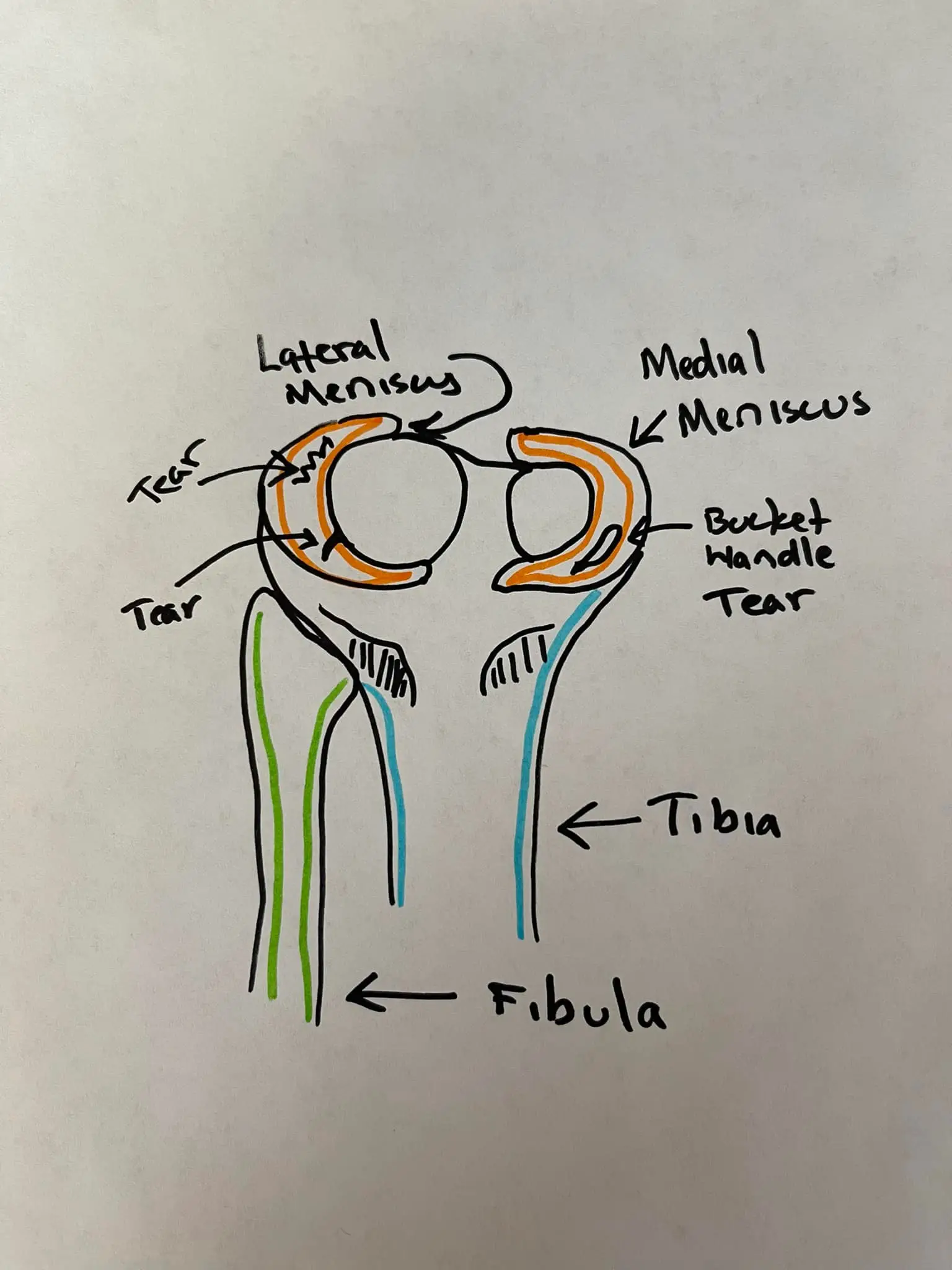Yes, pickleball can cause a meniscus tear. In fact, pickleball and most other racket sports can cause or exacerbat a meniscus tear. But that doesn’t mean you should stop playing.
Can I play pickleball with a torn meniscus?
Yes, you can continue to play pickleball with a torn meniscus. In fact, pickleball can cause a meniscus tear but that doens’t mean you should avoid playing. The key to remaining safe is understanding what the mensicus is, how a meniscus tear happens, and how to treat a meniscus tear.
How does a meniscus tear happen?
A meniscus tear happens when a person firmly plants one foot on the ground and aggressively twists the knee and body.
In the image below you can see the female pickleball player lunging to her left, firmly planting her foot and twisting her body to reach for the ball. This is a classic mechanism of injury for meniscus tears in sports.

Pickleball Meniscus Tear
In the following video I explain what the meniscus is and how to find a possible pickleball meniscus tear.
Is it safe to play pickleball with a meniscus tear?
Yes, playing pickleball with a mensicus tear is often safe. Since a meniscus tear is a common pickleball injury most people will continue to play and many meniscus tears may be asymptomatic meaning they don’t interfere with sports play or daily activities.
When to STOP playing pickleball with a meniscus tear:
- Don’t play pickleball if your knee feels unstable.
- Stop playing pickleball if your knee is swelling (see also ‘Knees Hurting After Pickleball? Here’s Why‘).
- Minimize aggressive side stepping and rapid twisting of the knee and body.
- Avoid sharp pains in the knee often described as piercing or stabbing.
- Stop playing if your soreness and stiffness turn to pain.
Does Icing help A Pickleball Caused Meniscus Tear?
Icing may help the subjective pain experience. Icing does not reduce swelling or inflammation and commonly thought.
How does icing help a meniscus tear?
The sensation of coldness experienced on the skin when utilizing a typical ice pack may help to distract the pickleball athlete from the acute sensation of pain.
If the sensation of coldness will allow the injured individual to remain active and continue to move the knee within a pain free range of motion, then icing may be an effective intervention for an acute meniscus tear.
Favorite Ice Pack
In my physical therapy clinic, Total Therapy Solutions, I use the Chattanooga ColPac oversized gel ice pack. See image below:
|
|
Pros:
Cons:
|
Does moist heat help A Pickleball Caused Meniscus Tear?
Similar to icing, moist heat will only affect the most superficial layer of skin. If moist heat of a dry heating pad feels soothing and relaxing to the injured pickleballer then using it may help reduce the subjective pain experience and allow you to resume normal movement sooner.
Are Knee Sleeves Good for Pickleball Meniscus Tears?
While knee sleeves are not harmful, they are not likely too helpful.
What is bad about a knee sleeves?
Knee sleeves often have a tight strip around the top and the bottom of the sleeve. These tight strips are designed to hold the sleeve in place, but as a result they disrupt normal lymphatic drainage and fluid exchange.
Knee sleeves also alter the sensory information coming from the knee joint. Our body’s are amazingly adaptive, and because of that we have natural alarm systems that generate pain causing us to stop a possibly threatening movement. If a knee sleeve alters the information coming from the knee joint, our body’s natural protective mechanisms may not function properly resulting in increased damage to the meniscus.
What is good about knee sleeves?
Knee sleeves do provide warmth and compression to the knee joint. This may help reduce subjective pain and temporarily squeeze excessive fluid out of the knee region.
What are the best knee sleeves to wear for pickleball?
For more information about meniscus tears and how pickleball can cause a meniscus tear, watch the following video.





